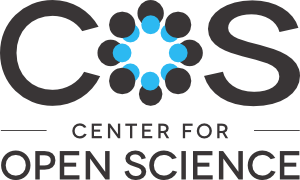Location
Our mission is to increase openness, integrity, and reproducibility of research.
These are core values of scholarship and practicing them is presumed to increase the efficiency of acquiring knowledge.
For COS to achieve our mission, we must drive change in the culture and incentives that drive researchers’ behavior, the infrastructure that supports their research, and the business models that dominate scholarly communication.
This culture change requires simultaneous movement by funders, institutions, researchers, and service providers across national and disciplinary boundaries. Despite this, the vision is achievable because openness, integrity, and reproducibility are shared values, the technological capacity is available, and alternative sustainable business models exist.
COS's philosophy and motivation is summarized in its strategic plan and in scholarly articles outlining a vision of scientific utopia for research communication and research practices.
Because of our generous funders and outstanding partners, we are able to produce entirely free and open-source products and services. Use the header above to explore the team, services, and communities that make COS possible and productive.
Members:
Resources
Displaying 21 - 25 of 447Framed field experiments with heterogeneous frame connotation
We study label framing effects in linear public goods games. By accounting for heterogeneous frame connotation, we can identify individual framing effects. We test for such effects in a field experiment on irrigation management in India. Using membership of the water users association as a proxy for frame connotation, we find a differential impact on contributions in the game. Members contribute relatively more under the irrigation frame than non-members as compared to an alternative, neutral, frame.
KESESUAIAN LAHAN PANTAI UNTUK WISATA DAN BERENANG DI KABUPATEN LOMBOK TIMUR
East Lombok Regency has different beach variations from the north, middle, and south in terms of its constituent material. The beauty of the beach in East Lombok District has not been well managed and developed so that it is less developed than the other beaches in Lombok Regency. Therefore, a preliminary study is needed in the development of coastal tourism in East Lombok Regency. The initial study that needs to be done is the land suitability of coastal for tourism and swimming in East Lombok Regency.
Pongamia (Pongamia pinnata): A Sustainable Alternative for Biofuel Production and Land Restoration in Indonesia
Indonesia has a large area of degraded land, i.e. 30 million ha, which could potentially be utilized for biofuel plantations. The leguminous tree pongamia (Pongamia pinnata syn. Milettia pinnata) could be utilized to produce biofuel while restoring degraded land. Here, we explore the potential of pongamia as a source of biofuel and for restoring degraded land in Indonesia. Pongamia occurs across Indonesia, in Sumatra, Java, Bali, West Nusa Tenggara and Maluku. It grows to a height of 15–20 m and can grow in a range of environmental conditions.
Reclaiming the Commons
Urban agriculture has been theorized by social scientists, and even some urban growers, as a means of reclaiming the commons. But what does “reclaiming the commons” entail? A longue-durée genealogy reveals distinct socio-legal imaginations of the commons and visions of how it might be reclaimed. Social thinkers and reformers have split over how to address the key problem of private property identified by John Locke: landless people who can’t find paid employment.
Landsat8 Based Crops and Other Land Use Mapping in Okara District of Pakistan
Developing countries like Pakistan is among those where lack of adoption to science and technology advancement is major constraint for Satellite Remote Sensing use in crops and land use land cover digital information generation. Exponential rise in country population, increased food demand, limiting natural resources coupled with migration of rural community to urban areas had further led to skewed official statistics.


